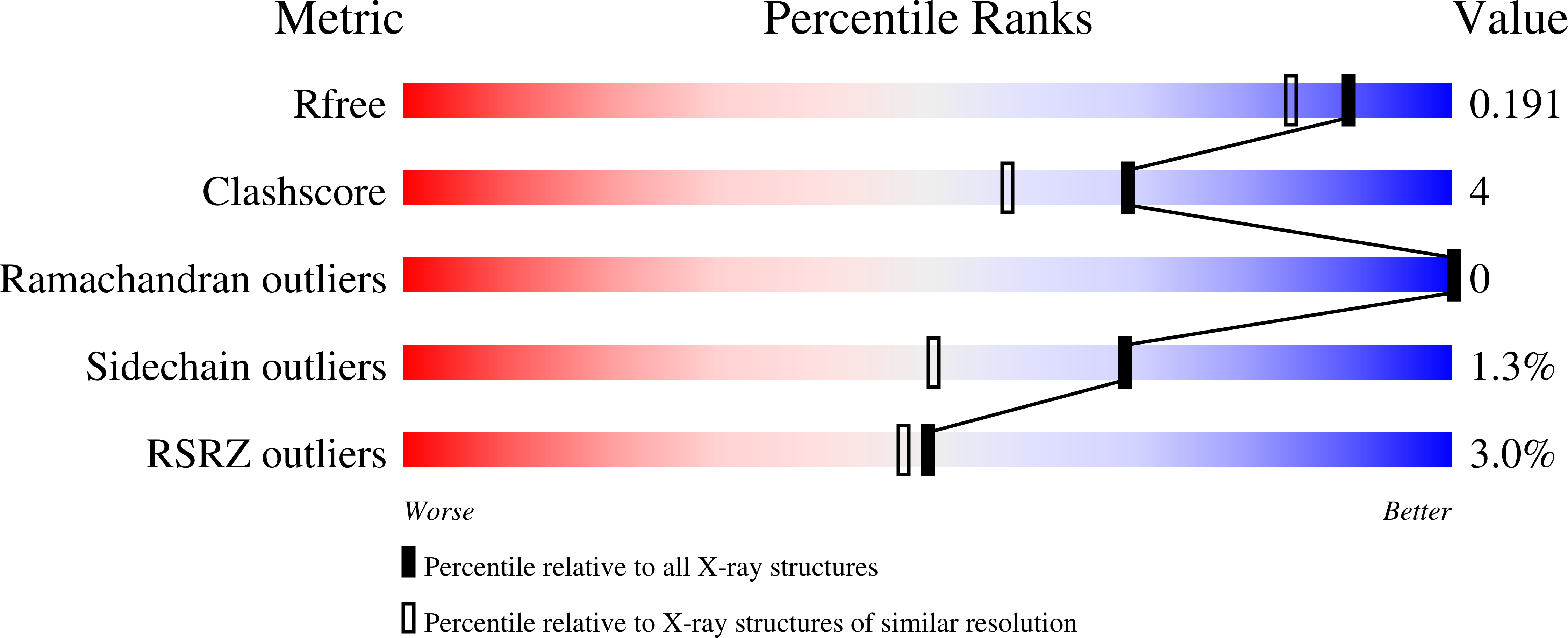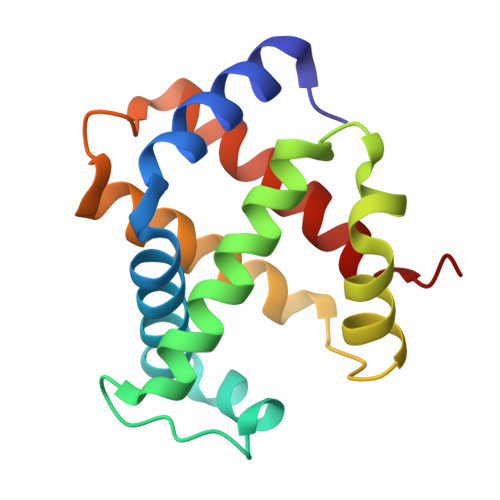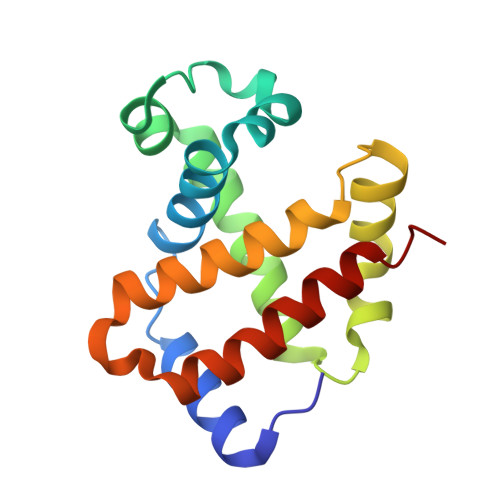PF-07059013: A Noncovalent Modulator of Hemoglobin for Treatment of Sickle Cell Disease.
Gopalsamy, A., Aulabaugh, A.E., Barakat, A., Beaumont, K.C., Cabral, S., Canterbury, D.P., Casimiro-Garcia, A., Chang, J.S., Chen, M.Z., Choi, C., Dow, R.L., Fadeyi, O.O., Feng, X., France, S.P., Howard, R.M., Janz, J.M., Jasti, J., Jasuja, R., Jones, L.H., King-Ahmad, A., Knee, K.M., Kohrt, J.T., Limberakis, C., Liras, S., Martinez, C.A., McClure, K.F., Narayanan, A., Narula, J., Novak, J.J., O'Connell, T.N., Parikh, M.D., Piotrowski, D.W., Plotnikova, O., Robinson, R.P., Sahasrabudhe, P.V., Sharma, R., Thuma, B.A., Vasa, D., Wei, L., Wenzel, A.Z., Withka, J.M., Xiao, J., Yayla, H.G.(2021) J Med Chem 64: 326-342
- PubMed: 33356244
- DOI: https://doi.org/10.1021/acs.jmedchem.0c01518
- Primary Citation of Related Structures:
7JXZ, 7JY0, 7JY1, 7JY3 - PubMed Abstract:
Sickle cell disease (SCD) is a genetic disorder caused by a single point mutation (β6 Glu → Val) on the β-chain of adult hemoglobin (HbA) that results in sickled hemoglobin (HbS). In the deoxygenated state, polymerization of HbS leads to sickling of red blood cells (RBC). Several downstream consequences of polymerization and RBC sickling include vaso-occlusion, hemolytic anemia, and stroke. We report the design of a noncovalent modulator of HbS, clinical candidate PF-07059013 ( 23 ). The seminal hit molecule was discovered by virtual screening and confirmed through a series of biochemical and biophysical studies. After a significant optimization effort, we arrived at 23 , a compound that specifically binds to Hb with nanomolar affinity and displays strong partitioning into RBCs. In a 2-week multiple dose study using Townes SCD mice, 23 showed a 37.8% (±9.0%) reduction in sickling compared to vehicle treated mice. 23 (PF-07059013) has advanced to phase 1 clinical trials.
Organizational Affiliation:
Pfizer Medicine Design, Pfizer Worldwide Research and Development, Cambridge, Massachusetts 02139, United States.



















